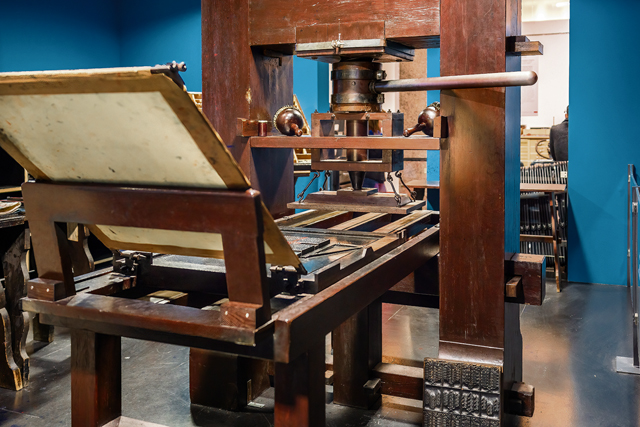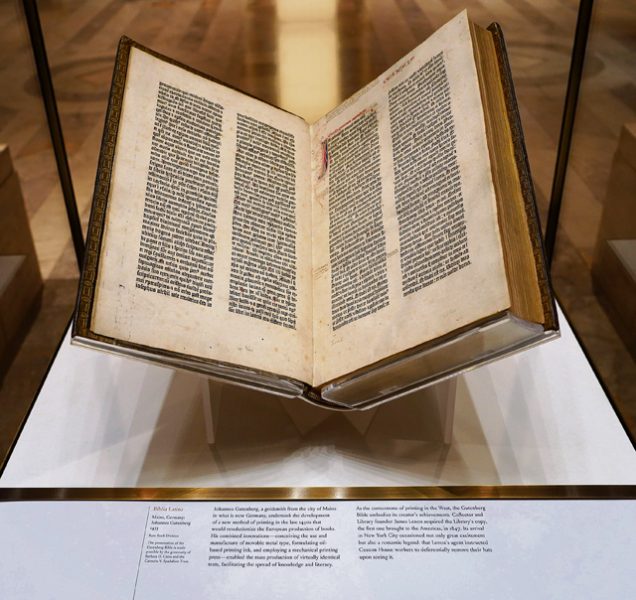
Many of you read the newspaper daily or weekly, some might be regular Kaiserslautern American readers. But, have you ever wondered what invention led to the development and mass production of periodicals?
Johannes Gutenberg, born in Mainz around 1400, significantly contributed to mass production of printed articles. Gutenberg was the son of a merchant and became a metal worker and inventor. He is specifically known for inventing typo-graphy.
Inspired by wine presses, he searched for a way to quickly produce books in large quantities. During his time books were manually crafted by scribes, often ornamentally decorated with colorful images, but cumbersome and slow in the making. Only one book could be produced at a time and this could take weeks or months. Some standard books, such as dictionaries or educational works, could be printed page for page in a type of block printing, where a printer could devise a page from a piece of metal or wood, but a new template would need to be made each time.

Gutenberg’s idea was to develop a type of movable print with individual letters, which could be used over and over in different words. It is noted that the Chinese had already developed such a system earlier, but Gutenberg is attributed with at least “re-inventing” or adapting this process, being completely unaware that a similar system existed in the far east.
About 1450 he presented his invention, using a wooden press and handcrafted metal letters to print multiple copies of single page pamphlets. His next keen step was to produce a bible, later known as the “Gutenberg Bible,” in large quantities. This also helped spread the ideas of the Protestant Reformation decades later.
Although a brilliant craftsman, Gutenberg was not a very clever businessman and didn’t earn much from his invention. He ran into legal problems, had to borrow money from his partner Johann Fust, who eventually took over their business. It is said that he was imprisoned for being indebted and later lived on a meager pension consisting of clothes, wine and grain, and died in poverty in Mainz Feb. 3, 1468. Little could he know that his printing press would lead to revolutionary developments in centuries to come.
Within a short time, news and books traveled around Europe at a fast pace, scientists could spread their findings, politicians their ideas and novelists their works, and consequently, more ordinary people learned to read and write. In the following centuries technological advancements led to even greater mass printing, newspapers were published on a weekly or even daily basis and the general public gained better access to information.
Gutenberg was able to print 180 bibles (with 1282 pages each) a year and that was considered a sensation at the time. Modern offset printers with digital printing systems can produce up to 120,000 newspapers an hour, a complete utopia during Gutenberg’s era.
In comparison: The Kaiserslautern American newspaper is printed in Oggersheim, near Ludwigshafen, and it takes about 45-60 minutes to print the weekly 10,000 copies.
A remake of Gutenberg’s first press can be viewed at the Gutenberg Museum in Mainz along with other interesting artefacts on the subject. About 60 Gutenberg Bibles still exist today, one of them is worth 4.6 million Euros, and they are considered to be the oldest books in the world made with movable type.
For further details, please visit https://www.mainz.de/microsite/gutenberg-museum-en/index.php


